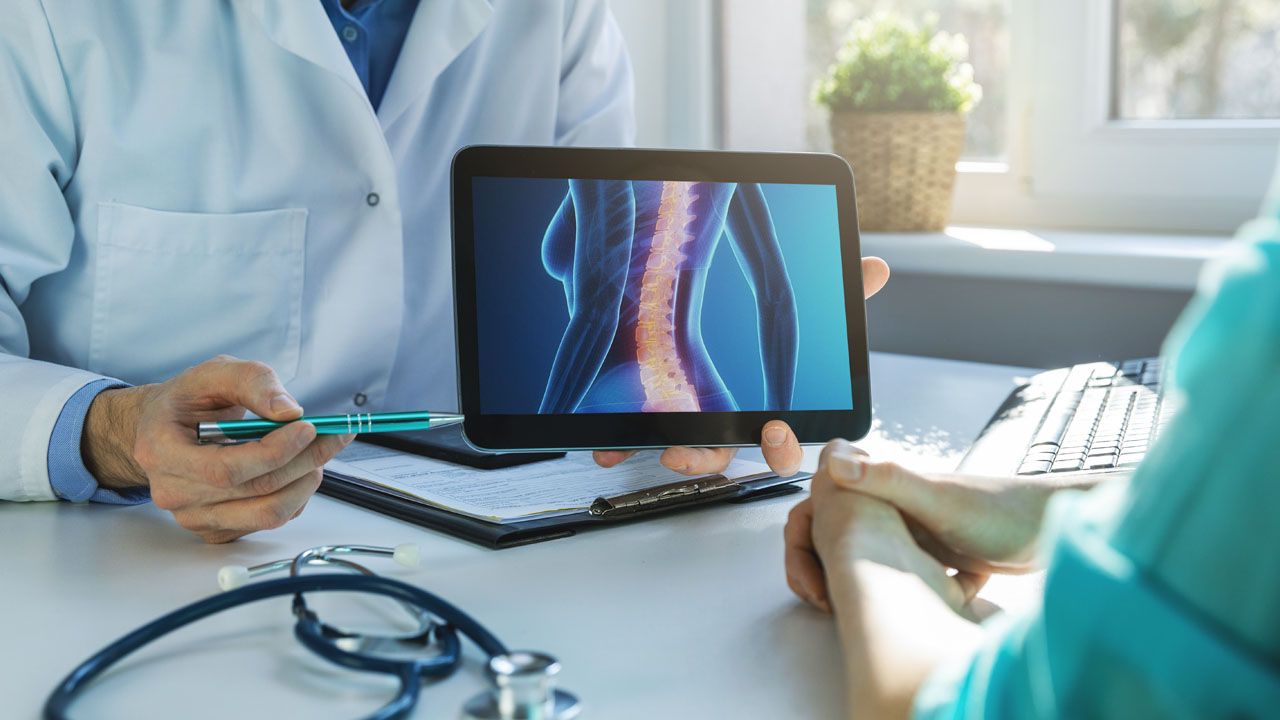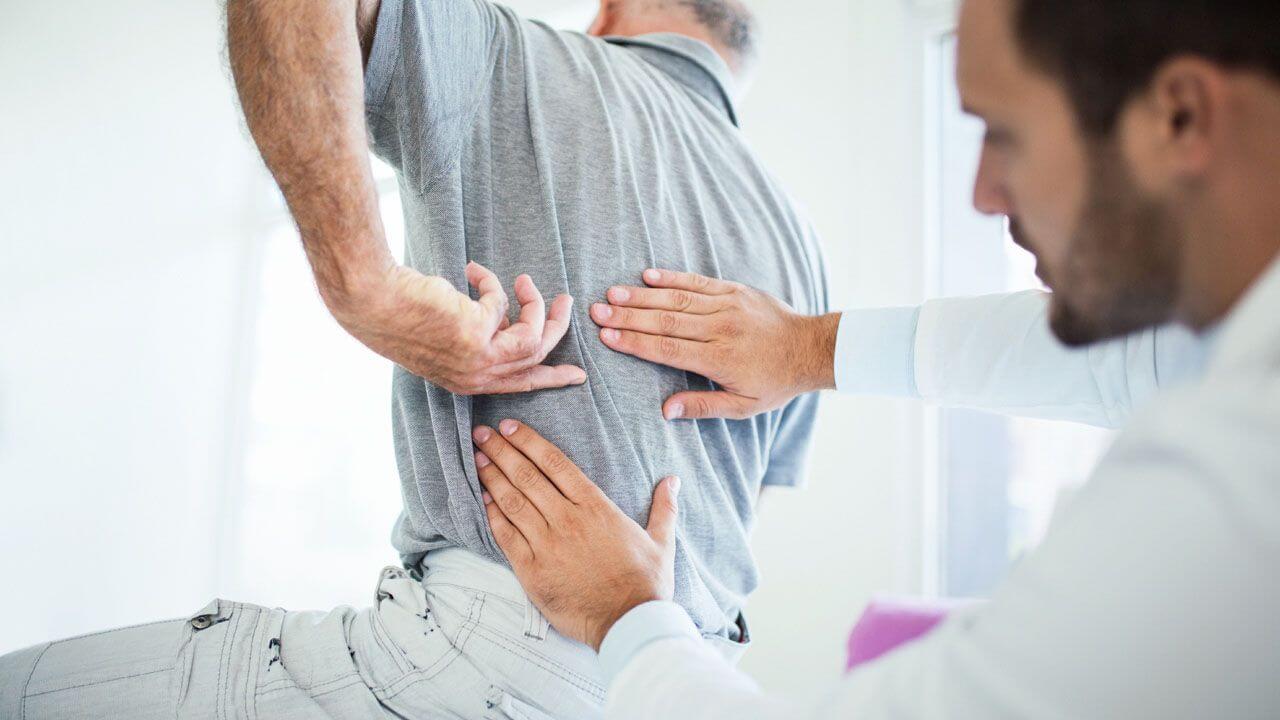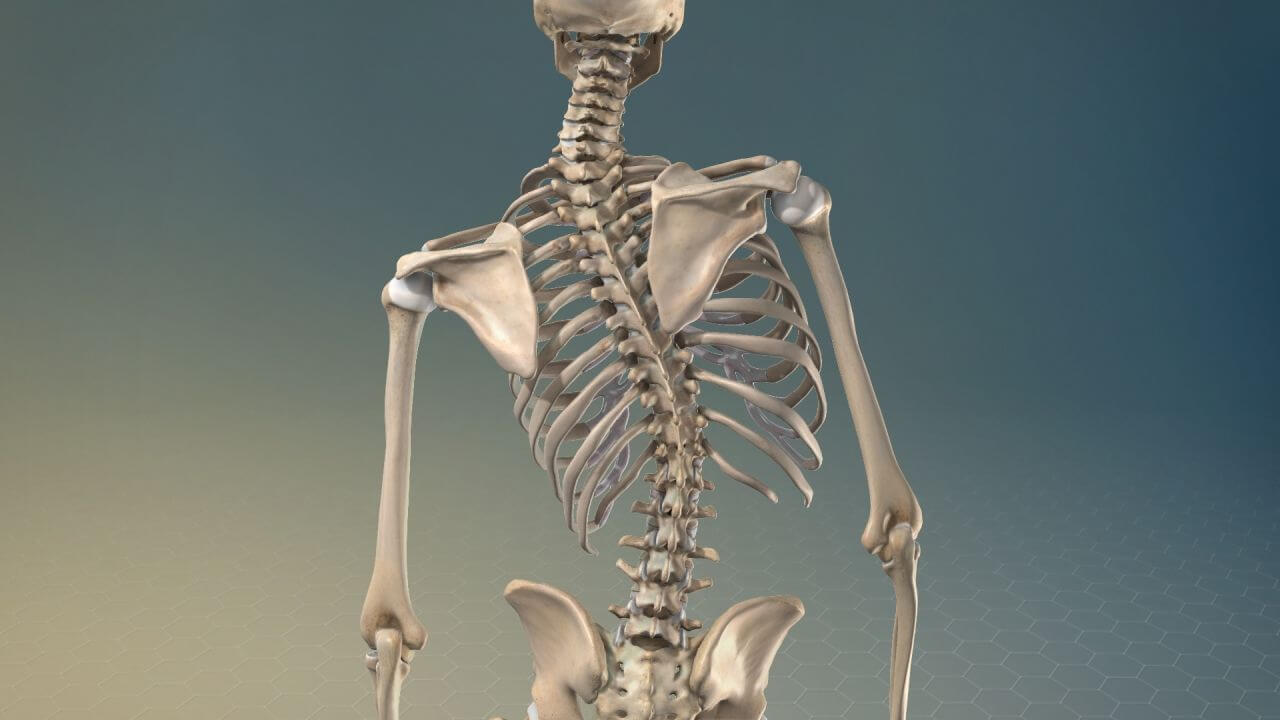This type of scoliosis has no known cause. Approximately 80% of scoliosis cases are considered idiopathic, with adolescent idiopathic scoliosis as the most common type. It’s usually diagnosed during puberty when all other causes are excluded.
Scoliosis is a condition that affects nearly 3% of people in the United States. That’s about 7 million individuals with abnormal spine curvature.
Scoliosis often develops in early adolescence, and women tend to be more prone to scoliosis that progresses to the point of treatment. Scoliosis can limit your activity level, cause pain and diminish self-esteem. Once scoliosis is detected, it should be closely monitored.
The spine surgeons at Desert Institute for Spine Care in Arizona offer expert diagnosis and observation in the event that your spinal curvature progresses and needs treatment.




To understand scoliosis, one must first know what a healthy spine looks like. When viewed sideways, a normal spine has both inward and outward curves. From behind, healthy spines are generally straight. Scoliosis describes any sideways curvature of the spine. The abnormal curve can happen at any level in the spine but is most common at chest level or in the low back. The spinal scoliosis curve can develop in a few different ways, such as a single curve shaped like the letter C or two curves that appear more like the letter S.
The primary age of onset for scoliosis is during the growth spurt that occurs before puberty, from 10 to 15 years old. However, the condition can also impact infants, adolescents and adults.
Scoliosis is most often defined by its causes.
This type of scoliosis has no known cause. Approximately 80% of scoliosis cases are considered idiopathic, with adolescent idiopathic scoliosis as the most common type. It’s usually diagnosed during puberty when all other causes are excluded.
This type results from a malformation of one or more vertebrae in the womb, causing curvature or other spine deformities.
This type of scoliosis is secondary to a neurological or muscular disease, such as muscular dystrophy, cerebral palsy or spinal cord trauma. It often requires surgical treatment.

Scoliosis is a multifactorial disorder, which requires a multidisciplinary approach to treatment. At DISC, our first aim is to assess or confirm a scoliosis diagnosis before proceeding with treatment. Once verified, several variables must be considered to help us determine your diagnosis treatment:
Once these factors are assessed, there are three orthopedically approved options for combating scoliosis — observation, bracing or surgery.
The spinal curve in many young people is mild enough not to warrant treatment. However, if your orthopedic surgeon is concerned that the curve may worsen, patients will continue to be observed with periodic assessments.
Braces are an effective treatment option that can prevent a curve from progressing. This option is generally used for those who have not reached skeletal maturity. However, braces can also play a minor role in adult treatment. Braces should be checked regularly by your spine care doctor and worn at least 16 hours every day until growth stops.
A minimal number of scoliosis patients require surgery to correct the curve or address scoliosis-related issues. Some patients experience a pinched nerve or a narrowing of the foramen due to their scoliosis.
At DISC, our doctors are leaders in endoscopic spine surgery, which for some select patients can be used to decompress a pinched nerve.
If back bracing does not correct debilitating spinal curves, a spinal fusion has shown to be very successful in stopping the progression of spine curvature. Spinal fusion surgery is able to straighten the curved spine, significantly improving the patient’s quality of life.
Cutting-edge scoliosis treatment is available from the specialists at DISC in the Phoenix, AZ area.
Our spine health blog features up-to-date spine education and expert spine tips from our spine specialists here at DISC.
1635 East Myrtle Avenue Suite 100, Phoenix, AZ 85020, USA
18700 North 64th Drive Suite 105, Glendale, AZ 85308, USA
8630 East Vía de Ventura Suite 210, Scottsdale, AZ 85258, USA
3487 South Mercy Road, Gilbert, AZ 85297, USA
1635 East Myrtle Avenue Suite 400, Phoenix, AZ 85020, USA